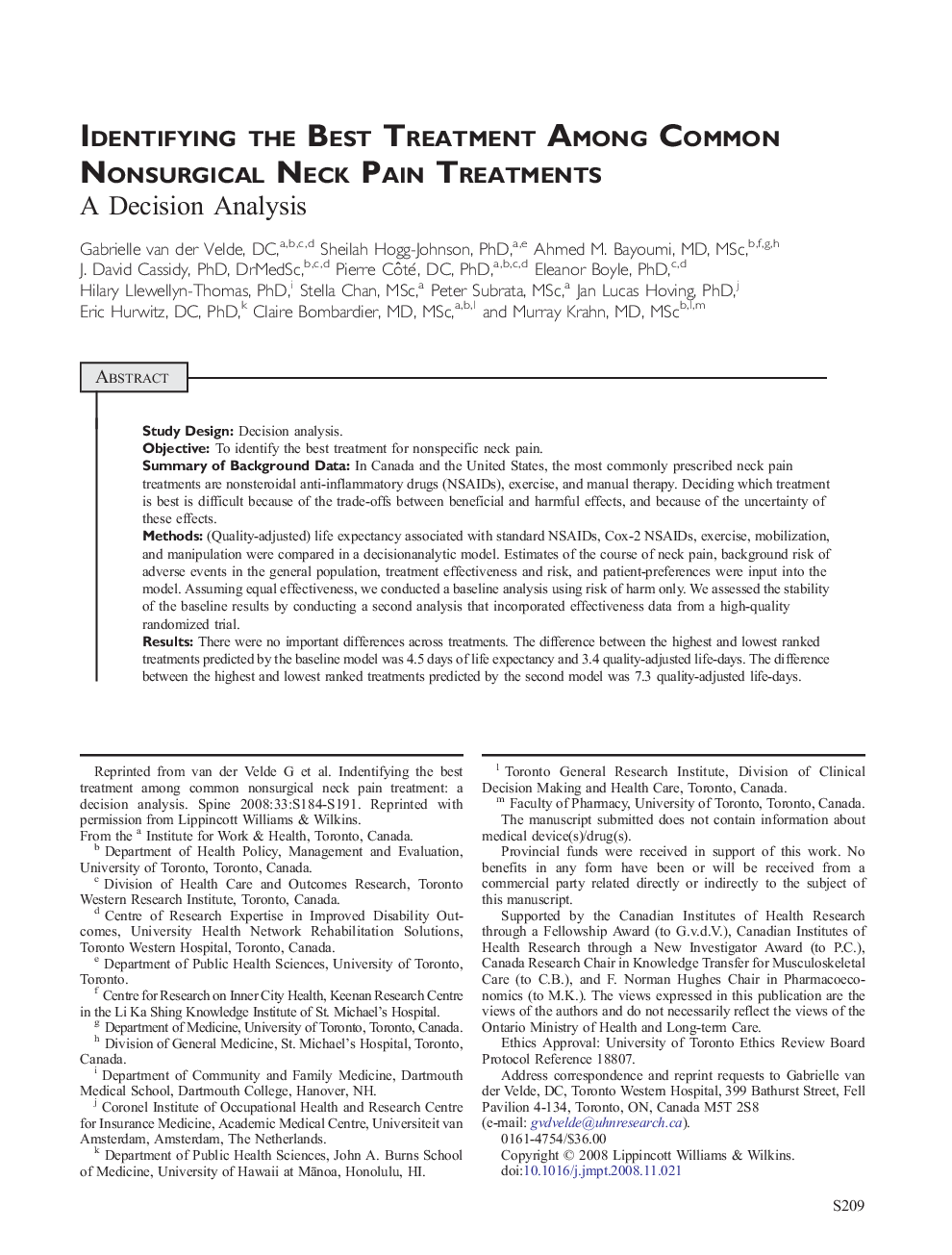| Article ID | Journal | Published Year | Pages | File Type |
|---|---|---|---|---|
| 2620977 | Journal of Manipulative and Physiological Therapeutics | 2009 | 10 Pages |
Study DesignDecision analysis.ObjectiveTo identify the best treatment for nonspecific neck pain.Summary of Background DataIn Canada and the United States, the most commonly prescribed neck pain treatments are nonsteroidal anti-inflammatory drugs (NSAIDs), exercise, and manual therapy. Deciding which treatment is best is difficult because of the trade-offs between beneficial and harmful effects, and because of the uncertainty of these effects.Methods(Quality-adjusted) life expectancy associated with standard NSAIDs, Cox-2 NSAIDs, exercise, mobilization, and manipulation were compared in a decisionanalytic model. Estimates of the course of neck pain, background risk of adverse events in the general population, treatment effectiveness and risk, and patient-preferences were input into the model. Assuming equal effectiveness, we conducted a baseline analysis using risk of harm only. We assessed the stability of the baseline results by conducting a second analysis that incorporated effectiveness data from a high-quality randomized trial.ResultsThere were no important differences across treatments. The difference between the highest and lowest ranked treatments predicted by the baseline model was 4.5 days of life expectancy and 3.4 quality-adjusted life-days. The difference between the highest and lowest ranked treatments predicted by the second model was 7.3 quality-adjusted life-days.ConclusionWhen the objective is to maximize life expectancy and quality-adjusted life expectancy, none of the treatments in our analysis were clearly superior.
